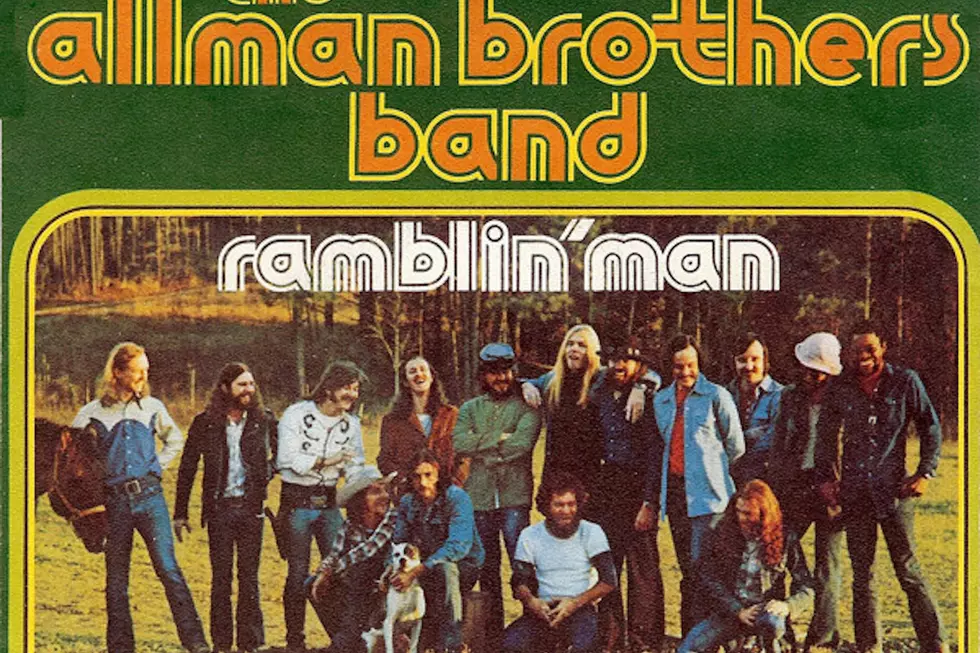
50 Years Ago: Allman Brothers Band Score Their Only Top 10 Hit
The year 1973 was transitional for the Allman Brothers Band.
On the one hand, 1971's At Fillmore East and 1972's Eat a Peach had both been successful, reaching No. 13 and No. 4 on the Billboard album chart, respectively.
On the other hand, however, they'd never landed a Top 10 single. The sudden onset of fame had taken its toll on band members who struggled with substance addiction. Then Duane Allman died in October 1971 followed by Berry Oakley in November 1972.
The group had some serious thinking to do about its future.
Things came into focus around a song Dickey Betts wrote before Oakley's death. "Ramblin' Man" was also the last song he recorded with the Allman Brothers Band.
Road life had come easily to Betts, whose father had worked in construction and often had to move his family from place to place. "I'd go to one school for a year and then the other the next," Betts told The Wall Street Journal in 2014. "I had two sets of friends and spent a lot of time in the back seat of a Greyhound bus. Ramblin' was in my blood."
The seeds of "Ramblin' Man" were planted during sessions for Eat a Peach, and Betts eventually got the lyric down late one night in Oakley's kitchen at the Big House in Macon, Ga., painting a picture of an outlaw type doing the best he can out there. "I guess the song is more or less autobiographical," Betts told Rolling Stone in 1975. "Not right down to the point, but overall it’s a pretty true song."
Listen to the Allman Brothers Band's 'Ramblin' Man'
At first, Betts considered giving the song to Johnny Cash. "I thought it was a great song for him, but everybody liked that song. Even my dad liked the song before we recorded it or anything," Betts later told the Sarasota Herald-Tribune. "And I'm thinking I'm going to send this to Johnny Cash and see if he wanted to do it."
Then producer Johnny Sandlin "said we needed another song for the record and asked if I had anything," Betts added. "I said, 'Well, I got one, but I was going to send it to Nashville for Cash to record.' He said, 'Let's hear it.' And then, 'No! We gotta do that.'"
"Ramblin' Man" was at least partially inspired by a 1951 tune with the same title by Hank Williams, and, as Betts told The Wall Street Journal, it "had a country flavor and needed to be Allmanized – given that rock-blues feeling. I thought of Eric Clapton's 'Layla' – which had come out a year earlier – with its long jam at the end. I figured something like that might work."
This was the first song recorded for 1973's Brothers and Sisters in Capricorn Studios, as the Allman Brothers Band continued efforts to replicate their electric stage presence. "I never could get used to recording in the studio when we first started out," Betts told Rolling Stone. "We'd always try our best to play in there, just like we played onstage. Slowly, but surely, we've begun to realize that the two are completely different entities."
"Ramblin' Man" was released as the lead track from Brothers and Sisters in August 1973, then roared to No. 2 on the Billboard Hot 100. The single was played on the radio so often that "you couldn't escape it," as band photographer Kirk West said in 2023's Brothers and Sisters: The Allman Brothers Band and the Inside Story of the Album That Defined the '70s.
Somewhere, songwriting legend Bob Dylan was listening, too – a lot. Betts would regularly sit in with Dylan when his tours would reach Betts' home state of Florida. One night in 1995, Dylan requested "Ramblin' Man" after calling Betts onstage at the USF Sun Dome in Tampa.
Betts told the Sarasota Herald-Tribune that he offered to scribble down the lyrics – but Dylan interrupted him. "I know the words," he told Betts. "I should have wrote that song."
As Betts said in Brothers and Sisters: "That was one hell of a compliment."
Top 25 Southern Rock Albums
Warren Haynes Remembers the Allman Brothers Band



